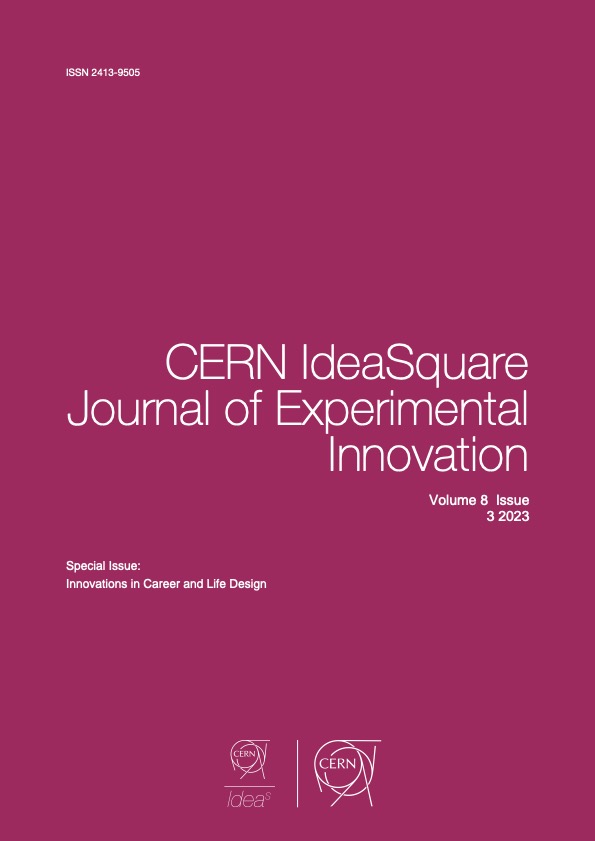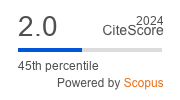Activating Agency through Life Design
DOI:
https://doi.org/10.23726/cij.2024.1562Keywords:
Higher education, Life design, EvaluationAbstract
Institutions of higher education must support students in their learning for personal and professional development. Given this mission, colleges and universities work to deliver and evaluate the best educational models to students. This paper shares a case study about the potential of life design that incorporates the framework of the United Nations Sustainable Development Goals prototyped at a liberal arts institution in the United States of America. The case study outlines preliminary findings from a pre/post-test survey that measures perceived creativity, bias toward action, curiosity, problem reframing, and changemaking – key aspects of life design programming. Educators may develop their own programs and evaluation strategies based on this critical reflection.
References
AshokaU. (n.d.). 4 levels of impact. https://www.ashoka.org/en-us/story/4-levels-impact
Burnett, B., & Evans, D. J. (2016). Designing your life: How to build a well-lived, joyful life. Knopf.
Burnett, B., & Evans, D. J. (2020). Designing your work life: How to thrive on the job by making it work at work. Knopf.
Cagarman, K. (2022). New course design: Combining design thinking and positive psychology interventions into a workshop format for life design. Presented at EURAM, 15-17 June. Winterthur, Switzerland.
Di Fabio, A. (2016). Life design and career counselling innovative outcomes. The Career Development Quarterly, 64, 35-48.
Dosi, C., Rosati, F., & Vignoli, M. (2018). Measuring design thinking mindset. International Design Conference, 1991-2002. https://doi.org/10.21278/idc.2018.0493
Guichard, J. (2015). From vocational guidance and career counselling to life design dialogues. In L. Nota & J. Rossier (Eds). Handbook of life design (pp. 11-26). Hogrefe Publishing.
Guichard, J. (2016). Reflexivity in life design interventions: Comments on life and career design dialogues. Journal of Vocational Behaviour, 97, 78-83.
Kernbach, S., & Eppler, M.J. (2022). Life Design Action book - Kreativität, Neugierde und initiative kultivieren, vom Denken ins Handeln kommen, um die Zukunft proaktiv zu gestalten. (Translated: The science of action – cultivating creativity, curiosity, and initiative, from thinking to action, to proactively design the future) Stuttgart: Schäffer-Poeschel.
Landberg, M. & Wolf, B. (2022). Why life design interventions should target the willingness to change – Conception of a Change Competence Model. Presented at EURAM, 15-17 June. Winterthur, Switzerland.
Liedtka, J., Salzman, R., & Azer, D. (2017). Design thinking for the greater good: Innovation in the social sector. Columbia University Press. https://doi.org/10.7312/lied17952
Maree, J. G., & Twigge, A. (2016). Career and self-construction of emerging adults: The value of life designing. Frontiers in Psychology, 6(2041), 1-11. https://doi.org/10.3389/fpsyg.2015.02041
Peck, A. & DeSawal (Eds). Applying design thinking to the measurement of experiential learning. IGI Global.
Plattner, H., Meinel, C., & Leifer, L. (Eds.). (2012). Design thinking research. Springer.
Pouyaud, J. (2015). Vocational trajectories and people’s multiple identities: A life design. Handbook of life design (pp. 59-74). Hogrefe Publishing.
Savickas, M. L., Nota, L., et al. (2009). Life designing: A paradigm for career construction in the 21st century. Journal of Vocational Behaviour, 75, 239-250.
Savickas, M. L. (1997). Career adaptability: An integrative construct for life‐span, life‐space theory. Career Development Quarterly, 45(3), 247-259.
Savickas, M. L. (2011). Life design: A paradigm for career intervention in the 21st century. Journal of Counselling & Development, 89(1), 13-19.
Stone, A. M., & Nelson, M. E. (2021). Co-curricular learning across campus: Strategies for breaking barriers. In A. Peck and D. M. DeSawal (Eds.), Applying Design Thinking to the Measurement of Experiential Learning (pp.181-200). Hershey, PA: IGI Global.
United Nations Department of Economic and Social Affairs. (n.d.). The 17 goals. https://sdgs.un.org/goals
Waller, R., E., Lemoine, P. A., Mense, E. G., Garretson, C. J., & Richardson, M. D. (2019). Global higher education in a VUCA world: Concerns and projections. Journal of Education and Development, 3, 73-83. https://doi.org/10.20849/jed.v3i2.613
Watson, M. & McMahon, M (2015). From narratives to action and a life design approach. Handbook of life design (pp. 75-86). Hogrefe Publishing.
Wells, D. & Bassi, F. (2020, December 15). Everyone a changemaker ecosystems: A new framework for the growing up years. https://www.wise-qatar.org/everyone-achangemaker-ecosystems-a-new-frameworkforthe-growing-up-years/
Downloads
Published
How to Cite
Issue
Section
Categories
License
Copyright (c) 2024 Tanja Vierrether, Anne Stone, Melissa Nelson

This work is licensed under a Creative Commons Attribution 4.0 International License.
Authors who publish with this journal agree to the following terms:
- Authors retain copyright and grant the journal right of first publication with the work simultaneously licensed under a Creative Commons Attribution License that allows others to share the work with an acknowledgement of the work's authorship and initial publication in this journal.
- Authors are able to enter into separate, additional contractual arrangements for the non-exclusive distribution of the journal's published version of the work (e.g., post it to an institutional repository or publish it in a book), with an acknowledgement of its initial publication in this journal.
- Authors are permitted and encouraged to post their work online (e.g., in institutional repositories or on their website) prior to and during the submission process, as it can lead to productive exchanges, as well as earlier and greater citation of published work (See The Effect of Open Access).


